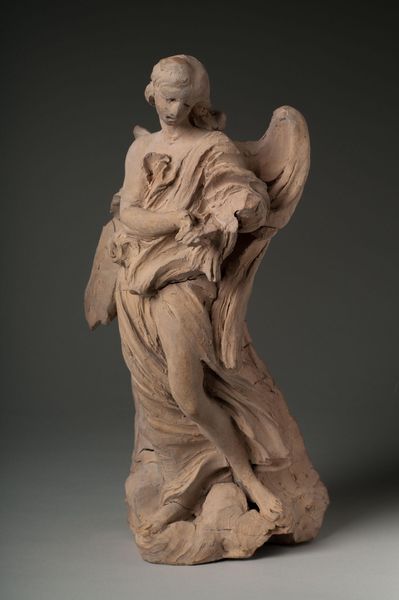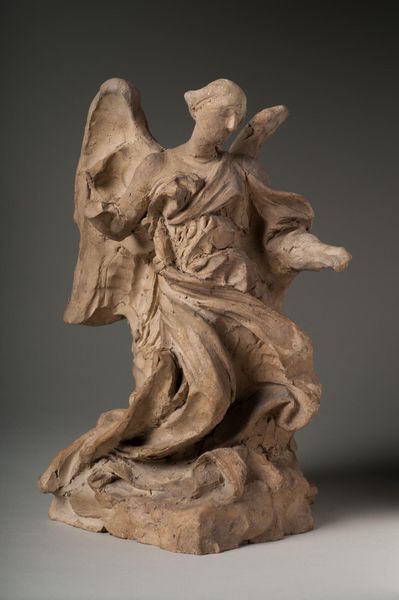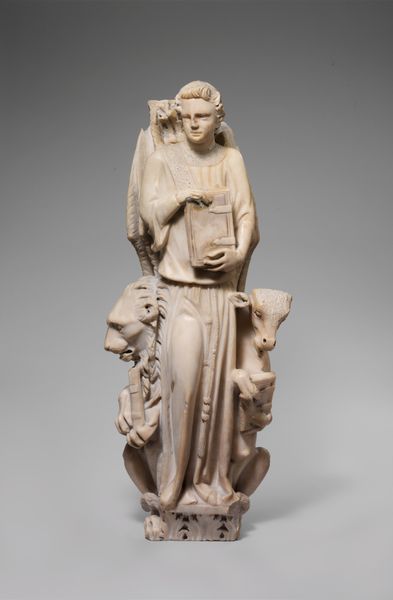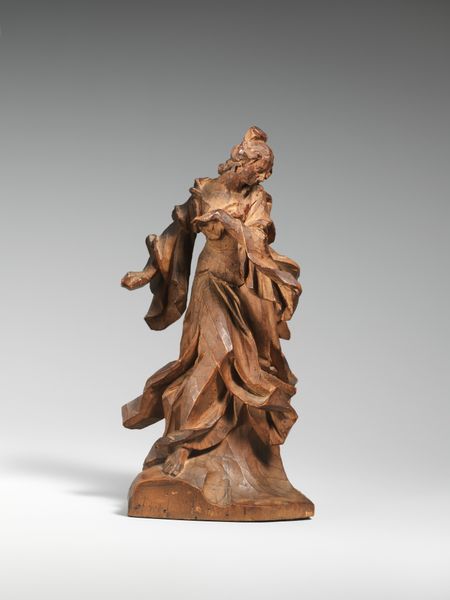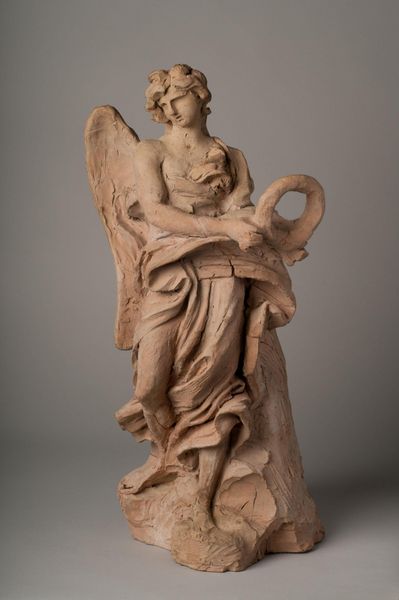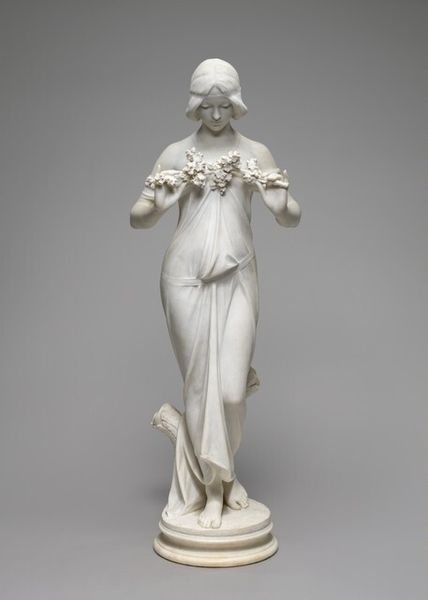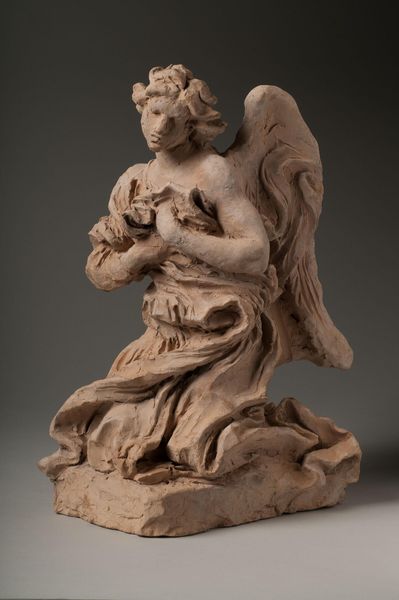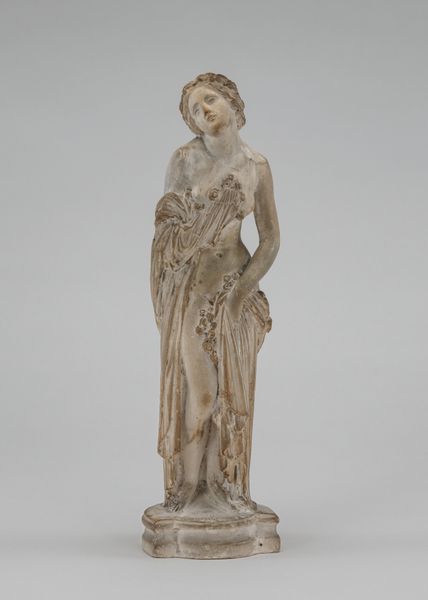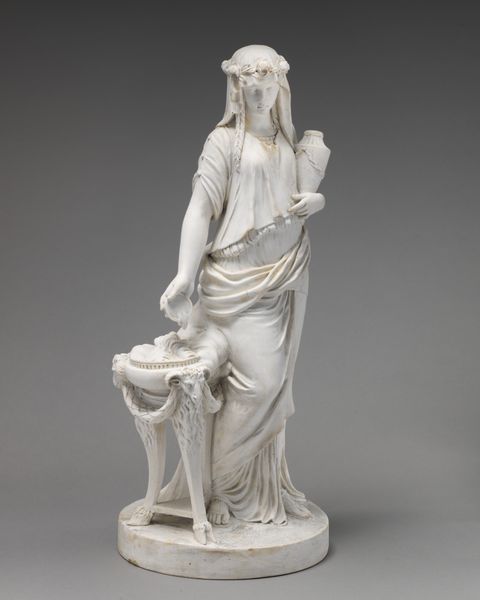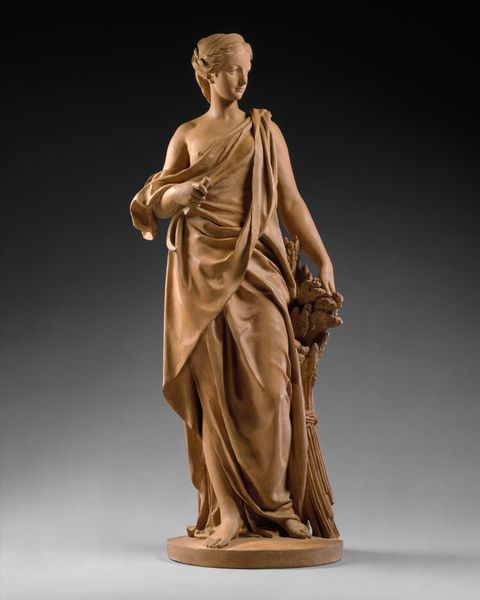
alabaster, sculpture, marble
#
neoclacissism
#
sculpture
#
alabaster
#
figuration
#
sculpture
#
decorative-art
#
marble
Dimensions: Height: 21 5/8 in. (54.9 cm)
Copyright: Public Domain
Curator: Today, we’re looking at Gilles-Lambert Godecharle's alabaster sculpture, "Victory Alighting on Earth," created around 1809. Editor: Immediately, I'm struck by the softness of the medium. It lends an almost dreamlike quality to the scene; she seems to float rather than firmly stand. Curator: Godecharle crafted this during a fascinating period of Neoclassical fervor. Consider how sculpture was used to bolster the legitimacy of emerging regimes, in France particularly. Victory figures, of course, would have resonated strongly. Editor: Absolutely. It's impossible to separate this idealized form from its socio-political backdrop. Note her draped garment, echoing ancient Greek sculptures, and juxtapose that with the aggressive militarism of Napoleon's empire at that time. This romanticized depiction feels inherently political, almost propagandistic in its essence. Curator: To your point, examining Godecharle’s biography reveals a complex figure, navigating the shifting allegiances of the period. He had earlier enjoyed commissions during the Austrian regime in Brussels. Now under Napoleonic control, artists adapted to survive, infusing works like these with revised symbolic intent. Editor: The base, a swirling cloud or perhaps representing terrestrial chaos, also speaks volumes. Victory literally 'coming down to earth' suggests the imposition of a new order. It's compelling to consider the inherent power dynamics imbued in the positioning of a triumphant figure overlooking chaos. Curator: The museum records point to the statue having been intended for a grand, probably aristocratic residence. The materiality of alabaster suggests a level of wealth and cultivation that would be visible and consumed within particular social networks. Editor: When considering the broader narrative of representation, I find it telling how 'Victory' is so frequently presented as a winged, draped woman. It taps into an established Western trope: the feminine form employed as an allegorical vehicle for ideas of nationhood, power and control. Curator: Indeed. Godecharle's piece makes us reflect on art's multifaceted role. It's an artifact of technical skill and beauty and a historical marker, laden with ideological intent and speaking to power dynamics, even centuries later. Editor: For me, grappling with these power dynamics is what truly enlivens encounters with artwork such as this, ensuring continued dialogue, reflection, and accountability.
Comments
No comments
Be the first to comment and join the conversation on the ultimate creative platform.

